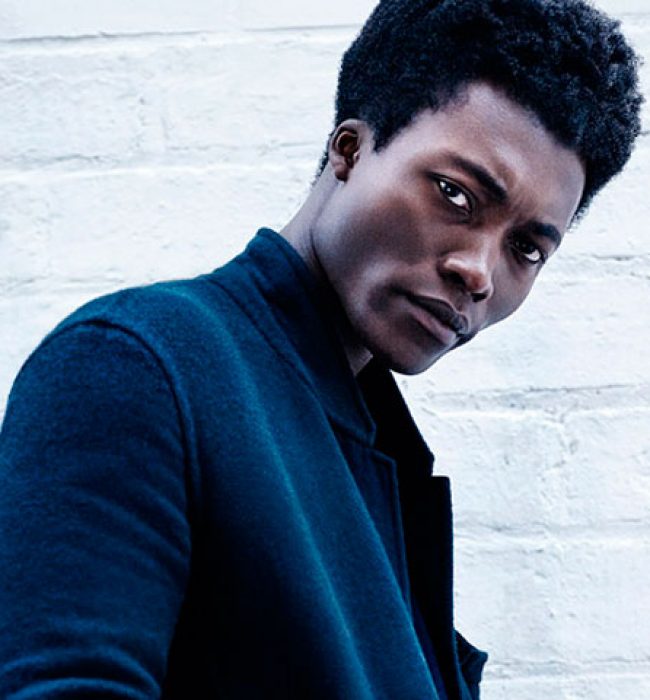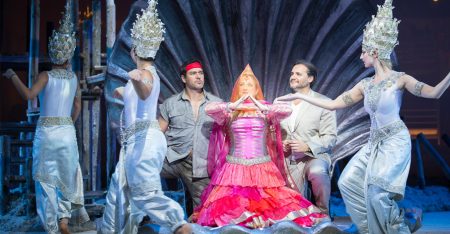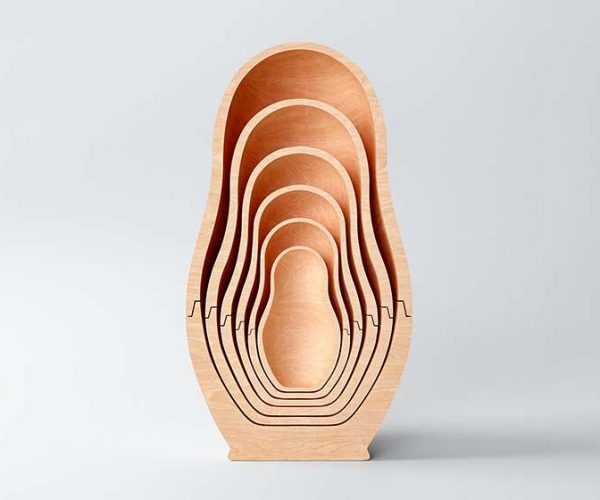May 2019 Cultural Events Barcelona
MUSIC AND
PERFORMING ARTS
MUSIC AND PERFORMING ARTS
01 / 05 / 19

Benjamin Clementine
Teatre Tivoli, May, 28
Benjamin Clementine is a prodigy, although in a sense that differ from the classical orthodoxy. In front of his piano he shows a velvety touch, an ease for the interpretation of melodic lines, as well as a tremendous improvisation capacity, with full freedom for the projection of a voice that seems not to finish. He is a powerful, indomitable, overflowing artist. A torrent of personality that chooses to break free, without contradicting the refinement of its pulsation. As if that were not enough, they put the stamp of authenticity on some letters that point directly to the intelligence of the listener. Maybe that's why his interventions in the city of Barcelona are remembered, and so it is expected that the sold out is reached at the Tivoli.
Accompanied by other musicians on stage, a true spectacle to contemplate the multiplication of the possibilities treasured by this musician that transcends by far the Soul and R&B roots of an Aretha Franklin or a Ray Charles. Dramatically modern, he presents himself in a frontal and sharp way, just like his lyrics. "I am here to create music for the human being", "I have a lot to say", "I am ambitious", he explained in an interview. A triple evidence of great honesty, which does not disguise the radical nature of his art, his commitment to life. In the Teatre Tivoli will be accompanied by a string quintet, "His Parisian string quintet", amplifying the exhibition of intimacy. Emotions are guaranteed, on one side and on the other of the stage.

Sara Cubarsi
La Pedrera, May, 19
A few months ago the award-winning pianist Víkingur Ólafsson- revealed some of the daily routines of this legendary
composer, such as waking up every day at a very early hour in the morning and spending hours composing. The cycle Residencias musicales, which supports the development and increases the visibility of emerging artists' careers, offers a concert in May featuring the young violinist Sara Cubarsi, who has received several prizes, including the First Palau contest, in 2013, organized by the Palau de la Música Catalana. Other invited performers will be Rita Salgado, horn and Adrian Blanco, piano. The program is made up of figures from the Romantic repertoire, such as Johannes Brahms, but the view is also projected to the present, with an incursion in the work of Ligeti and -undoubtedly one of the most interesting moments- with the interpretation of the young man's work composer Joan Magrané, hailed as one of the talents of reference for the coming decades.
DOGVILLE: UN POBLE QUALSEVOL
Teatre Lliure, from May, 9th to June, 9th
The major commotion that provoked Lars von Trier’s Dogville was related to a large extent to the criticism
of certain United States policies that were made explicit at the end of the film, by means of harsh images. But before that final moment, what the viewer found was a theatrical narrative perfectly created, without decoration or staging -like boxes of a board- in which the actors' magnificent interpretations carried the weight of the plot; a story about the abuse and submission of a kind soul, who comes to the town and puts herself at the service of its inhabitants. The adaptation for the Teatre Lliure by Pau Miró and Sílvia Munt, who is also the director, presents an unequivocal interest, which is to discover the transposition of that peculiar cinematographic reality in strictly theatrical narration. The subtitle of the work, "any town", rightly points out the potentially universal nature of that type of relationship, not limited to a specific territory.
Philip Glass
Palau de la Música, May 21
Tireless at 88, the current visit of Phillip Glass to the Palau de la Música is a must. A few months ago the award-winning pianist Víkingur Ólafsson- revealed some of the daily routines of this legendary composer, such as waking up every day at a very early hour in the morning and spending hours composing.
Day after day, without exception. Even on tour, as if the untimely schedules and fatigue for concerts and trips -explained Ólafsson- would not affect. An example of discipline and commitment to the creative task, which has led to the production of a large number of works, identifiable by the aesthetic that has turned him into a reference. The confluence of notes, with pleasant melodies that are reproduced in different lines with no confusion, can be tasted at the concert of the Palau, where three pianos concur -Glass himself, sitting in front of one- as well as the choir of l'Orfeó Català.

LES PÊCHEURS DE PERLES
Gran Teatre del Liceu, from May 13 to 25
Aesthetically daring, the staging by Lotte de Beer of Les pêcheurs de perles -Bizet's other great opera, after Carmen-
alternates two different types of reality, that of the exotic context on which the original score is based and that of the conception of a very frequent show in our times, the reality show. The audacity of the scenography is such that the limits of kitsch are intensely explored, eventually softened by the enveloping and persuasive music of Bizet. Not only does it potentiate the performance of the main vocal cast, but also of an omnipresent chorus, which accompanies and transports the spectator between both worlds.

Iveta Apkalna
Palau de la Música, May, 11
Johann Sebastian Bach’s works for organ need no introduction, because of their intricate and imposing majesty. Nevertheless, rediscovering them at the Palau de la Música Catalana by Iveta Apkalana, in parallel with Philip Glass’ works, is an extremely interesting experience.
The vivid repetition of musical cells in the work of one of the fathers of minimalism is present in our lives, more or less consciously. For example, his music appears in films as important as The Hours (Stephen Daldry, 2002), and is usually used as a complement to visual support, in documentary movies or advertisements. In dialogue with some of the most emblematic and perfect constructions of Bach's organ repertoire, the listener will be transported to a dream and family reality, in which intelligence recognizes itself activated by sensitive means.
< LAST MONTH NEXT MONTH >
EXHIBITIONS
EXHIBITIONS
01 / 05 / 19

Berenice Abbott
Fundación Mapfre, until May, 19
Last weeks to visit the exhibition of the American photographer Berenice Abbott (Springfield, Ohio, 1898 - Monson, Maine, 1991), a lover of New York’s modernity, who portrayed the development of the human landscape of the twenties and thirties, portrayed in the book Changing New York. Organized by the Mapfre Foundation at Casa Garriga Nogués and curated by Estrella de Diego, Professor of Contemporary Art at the Complutense University, the exhibition, which is divided into three thematic sections, consists of two hundred snapshots. It represents a broad tour of her work, a monographic vision completed by eleven photographs of Eugène Atget -the organizers explain- that were "developed by Abbott herself at the end of the 1950s". It was during her stay in Paris, when she came into contact with Man Ray, who in turn introduced her to the work of Atget. Years of formation, after which she returned to New York, her favourite scenario.
As it has been written, she is not only the portraitist of modernity, showing its lights and vertiginous forms, but she herself applies a modern perspective -in her framings, for example- to subjects and buildings that she captures, becoming timeless protagonists of stories that still interact with the viewer.

Quantum
CCCB, until September, 24
Radically modern and inspiring, the exhibition "Quantum" represents an immersion through art and science in a reality that, as the organizers point out, remains "hidden from the senses".
They explain that quantum physics "is the human theory that most accurately describes nature today. In many respects, it is a surprising theory, subject to criticism and of great philosophical scope". In the new scientific paradigm, the attitude of the researcher is fundamental, the observer is incorporated as a parameter to validate the results. One of the important tasks of this exhibition is showing how creativity is implicit in scientific research, and the way in which artists unravel or approach the mysterious dimension of nature. Intuitions and calculation are in contact, collaborating in unexpected ways rather than in contradiction, as traditionally could be supposed. Just like the CCCB has accustomed the visitors, the arrangement of the ten works of art and the nine scientific contributions is thought out excellently, in order to capture the interest and introduce the viewer to a question that is, in equal parts, intellectually complex and artistically fascinating. "The union of these two itineraries, the artistic and the scientific, creates a multifaceted scenario that raises new questions and connections, helping us to comprehend an apparently invisible reality and the impact it has on our lives".
Max Beckmann
Caixaforum, until May, 26
The normative informality of expressionism and its irreverence in relation to the topics chosen –a kind of realism, which incorporates the deformation of the
caricature and eventually lends itself to allegorical interpretations- can be appreciated in the work of Max Beckmann. Angular features and strident colours draw attention, emphasize the importance of not being swayed in the traditional themes of art, which seem to have become archaic. The changing and frenetic world of modernity, as well as the trauma of world wars -the strange mixture of poverty and development, and luxury- are reflected in the canvases and sculptures that can be seen in the Caixaforum exhibition until May 26th: "a monographic with more of half a hundred works by one of the most outstanding German artists of the 20th century", which is organized in differentiated sections, to show the evolution of Beckmann’s art. "The first part covers his time in Germany, from the years before the First World War to the rise of fascism in the 1930s, when he was expelled from the art school in Frankfurt where he taught, and his works’ exhibition in public forbidden. The second part, centred on his years in Amsterdam and the United States, is structured around four metaphors related to exile: 'Masks', about the loss of identity; 'Electric Babylon', about the vertigo in the modern city; 'The long goodbye', which raises the equivalence between exile and death, and 'The sea', metaphor of the infinite, its seduction and its estrangement"

Albert Serra. Roi Soleil
Fundació Antoni Tàpies, until June, 16
There are thoughts, or reflections on situations actually lived, which present intrinsically a great interest, because they reveal the paradoxical dimension of many human statements
especially those that claim to be universal. The qualification of Louis XIV as Roi Soleil ("Sun King") could be defended lustfully during the monarch's lifetime, but it is evident that, no matter how much he exalted himself above mortals, like everyone else -like the lowest- he had to succumb at the end. The filmmaker Albert Serra premiered at the 2016 Cannes Film Festival La mort de Louis XIV, in which he portrayed his agonizing farewell to life, and the following year Serra himself organized a performance at an art gallery in Lisbon with the same purpose, which has been exhibited in various places as an installation. The Fundació Tàpies offers the possibility of viewing 61 minutes of filming in which the spectator attends, stunned, a spectacle that is not very uplifting and yet (falsely) real, like life itself. In order to abound in the artifice, the main character, that special one who wanted to be related to the gods is portrayed in that stage of advanced disease -affected by gangrene- as the most miserable among the human beings.

PHOTOGRAPHS FROM «PEOPLE FROM 20th CENTURY»
Palau de la Virreina, until June, 23
The work of August Sander (Herdorf, 1876 - Cologne, 1964), one of the references of twentieth century photography, can be enjoyed at La Virreina. The title of the exhibition points out the type of predominant materials:
portraits that reflect without filter or sentimentality men and women of his time, framed with full awareness in attitudes and poses that make them so much closer. The title of the exhibition coincides with its most important project, Menschen des 20. Jahrhunderts ("People of the twentieth century"): "a huge archive of professional and typological portraits that ref lects the productive fabric of German society from the 1910s to the mid-1950s, between the Weimar Republic and the downfall of Nazism after the Second World War". The exhibition exhibits 187 photographs, as well as materials that allow contextualizing your project. The organizers explain: “The exhibition, that shows high quality modern prints on the base of the original gelatin silver negative glass plates, is completed with a documentary section showing handwritten letters from the photographer, the portfolios made at the time for some sections and a variety of bibliographical material".
< LAST MONTH NEXT MONTH >
